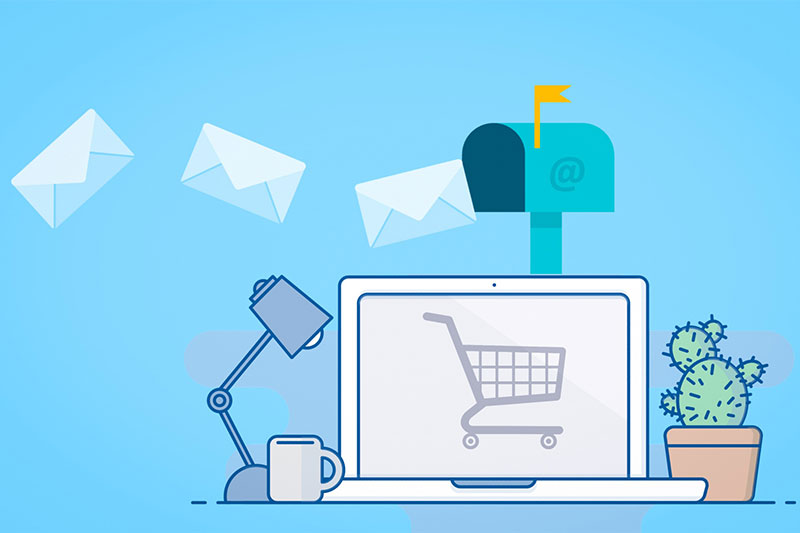Email marketing can be a fantastic way to reach your potential customers. Be sure to avoid these 7 common newsletter mistakes, however.
Email newsletters, or EDMs (short for Electronic Direct Mail marketing), are a great way for online businesses to communicate with their customers. Regardless of whether you’re an established business leader, aspiring entrepreneur, or fearless creative, having adequate communication with your customers is essential to your success.
However, if you’re new to this kind of marketing, it might all sound a little confusing to you, and you may not know quite where to start. Plus, as a newbie, it can be easy to make one too many mistakes in your first marketing venture, which could be detrimental to your business, as it’s one of the gold mines of gaining leads (and eventually, customers).
But not to worry! We’re here to uncover the 7 most common mistakes that you might be making with your email newsletters, and how to avoid them.
Recycling Subject Lines
“It’s imperative to update your audience with newsletters,” says Andrew Stiles, a business writer at Boomessays and Australian help. “However, people don’t like to receive emails and see the same subject line over and over; this causes them to either ignore your email, delete it… or do both. So, when you create subject lines, be creative, and change it up every so often. Don’t just talk about things; sell the content!”
Experiment with subject lines that provoke curiosity, inform, and, above all, provide value to your primary audience. For brands with a younger audience, consider using emojis in your subject lines, which is known to increase engagement.

Lack Of Consistency
Nothing annoys people more than a brand not being consistent with their email newsletters. Here are some examples of inconsistency:
• Lack of a posting schedule
• Too many emails in one week (or in one day)
• Not sending newsletters weekly
Therefore, you should maintain a consistent schedule for your newsletter – and set expectations accordingly in your newsletter signup form. Remember that quality trumps quantity!
No A/B Testing
There might not be a universal way to make email marketing successful, but you should be testing different variations of your newsletter to optimise your format and delivery to increase your email open rate and your click-through rate.
A/B testing, also known as split testing, is most commonly used. It involves comparing the performance of two variations. Play around with your email subject line, your call-to-action buttons, or the layout as needed. Fortunately, most email automation tools today make A/B testing highly intuitive.
Not Using Automation
As many as 50% of businesses now leverage automation to help send their email newsletter to subscribers and potential newcomers, according to Hubspot. In fact, this number is expected to grow steadily until at least 2023.
Automation can be a fantastic way of making new subscribers feel welcome, notifying customers about flash sales, and personalising email marketing with promotional offers such as birthday discounts. So, why not use automation to get your emails to your subscribers? You might gain some additional sales from it!
No Newsletter Promotions
Being in touch with your audience means offering enticing promotions every once in a while, which will help promote your brand, prompt customers to open your newsletters, and maybe even increase sales.
People love to hear about discounts, customer loyalty bonuses and promotions, so be sure to make your announcements as appealing as possible in your newsletter – consider including key information in the email subject line.
Also, make sure signing up to the email newsletter is as easy as possible – consider asking potential customers to subscribe at an event, at the point of sale, or for a first-time discount.

Not Using Social Media Buttons
“People turn to social media to stay connected with their favourite brands,” says Owen Lyall, a marketing writer at State of writing and Paper fellows. “By including social media share buttons in your email newsletters, you’ll see your email subscribers become your social media followers. You can even implement social media buttons through ‘friend referrals,’ where people can share your brand with other people via email and social media.”
By cross-promoting your social media platforms in your email marketing campaigns, you’ll be able to engage customers on multiple fronts, and hopefully, increase your customer lifetime value.
No Call-To-Action
Finally, you have to ask yourself, what do you want your audience to do, now that they’ve read your newsletter?
Besides putting in your social media buttons (telling them to go follow you on social media), you’ll need to establish a clear call-to-action. Consider the following:
• What do you want them to buy?
• Do you want them to take advantage of a certain offer or discount?
• Should they subscribe to your newsletter?
• Should they visit your website?
The newsletter should clearly communicate how you would like your audience to respond. Be sure not to overload your emails with competing call-to-actions, however, as this can weaken the customer experience and reduce your conversions.
Conclusion
Known for having some of the highest conversion rates among marketing campaigns, email marketing is essential for communicating with your customers. However, you still need to have your customers actually open and click on your emails in order for this marketing strategy to be effective. By avoiding these 7 mistakes, you’ll not only be more comfortable about sending emails, but you’ll also be seeing potential leads turn into sales.
Related Articles
5 Content Marketing Tips to Improve Your Business Website
Instagram Analytics: 8 Crucial Metrics to Track Your Success





